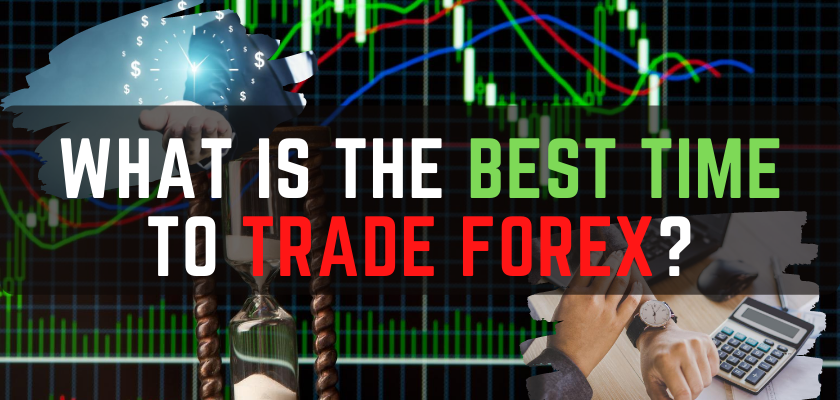The advantage of the Forex market is that it’s open to the market 24 hours a day on all weekdays. Unlike the stock market, the forex market operates according to the regular opening hours of three main trading groups located in different time zones. Traders have the freedom to trade when they want, depending on their specific interests.
Objectively, there is no best time to trade Forex for any trader. It all depends on individual preferences, goals, and trading strategies. We will look at the impact of day and night in different parts of the world on various currency pairs and, consequently, on your trading. We will also focus on the two main fundamental forces, supply and demand, to identify the best times to trade Forex.
Forex liquidity
Liquidity, the ability to find a counterparty for every transaction, It can be a problem in some financial markets, but not in Forex. While liquidity does not matter when choosing the best time to trade Forex, it is worth mentioning for additional insights. Most retailers operate with a marketing broker who is always ready and willing to fulfill an order.
In these cases, problems can only arise when the broker himself has trouble fulfilling orders in the interbank market. An example of this happened during the Swiss franc movement on January 15, 2015, when the Swiss National Bank removed its link to the euro: there was a huge gap. Forex is truly a liquidity miracle. Price gaps are so rare (except for market open and close time) that it usually takes a novice trader several months of trading before they see it with their own eyes.
- Read More 8 Reasons FOREX Traders Lose Money
Forex volatility
Volatility determines how strong price movements can be at certain times of the day, and it varies significantly in the forex market across a pair and at any time of the day. Traders must understand volatility because the vast majority of trading strategies are incompatible with periods of high volatility. Market testing clearly shows that adjusting the trading strategy to suit your preferred volatility can make the difference between significant losses and big gains, even when all other conditions are equal.
For example, an oscillator-based trading strategy that works best for volatile markets. And it captures “bounces” from key levels will not benefit much more from level breakouts driven by high volatility. Every time you create or review a strategy, determine what level of volatility it will work with and apply it accordingly.
Why volatility Change
Why do volatility levels differ by the instrument by day, and why is the price moving? The answer comes below to supply and demand. The market, Forex or whatever, is moving with a lot of pending orders. The more there is, and the higher its volume, the greater the market volatility. Now let’s see who the main drivers of the market are.
Big Institutions place the most massive orders in the most considerable quantities and on time. Unlike private traders, who have the independence to trade as they wish, institutions operate according to the opening hours of the world’s commercial capitals. Thus, the 24-hour Forex trading day is divided into three international trading sessions:
- Asia Pacific
- London (Europe)
- New York (North America)
Some times Asia pacific defines two different sessions called Sydney and Tokyo. But these two sessions mainly define as Asia pacific because these two sessions overlap most of the time.
Forex trading sessions.

The trading day officially begins in Australia when the Sydney and New Zealand institutions open around 9 am (GMT + 10). Marking the start of the Asia-Pacific trading session. For the next two hours, they are joined by Tokyo, where most of the Asian currency trading takes place, followed by Hong Kong and Singapore.
The forex market opens at the beginning of the Asia Pacific session on Sunday night(Forex market closed on weekends), and as individual traders and institutions try to stabilize after related events that may have occurred over the weekend. This is the only time of the week that gaps occur regularly. This means that unless gaps are exactly what you want, weekend trading is not the best time to trade Forex.
At 7:00 am GMT, the Asia-Pacific session is slowly being replaced by the London / Europe session. Frankfurt, Europe’s financial heart, starts an hour earlier than London, but this lag in activity is largely overlooked. The North American trading session begins at midnight GMT, beginning in New York and then Los Angeles. At night in Los Angeles, the markets will slow down, and the current trading day will end. As the world trade sessions gradually transform into each other, there is some overlap.
Conclusions
It’s essential to take advantage of market overlaps And keep a tight eye on news releases when establishing a trading schedule. Traders looking to improve profits should aim to trade during volatile levels that match your strategy. While monitoring the release of new economic data. This balance allows full-time and part-time traders to set a schedule that gives them peace of mind. Knowing that opportunities are not slipping away when you take your eyes off the markets or need to get for a few hours of sleep.



[…] Read More When is the best time to trade Forex? […]
[…] Read More When is the best time to trade Forex? […]
[…] Read More: When is the best time to trade Forex? […]
[…] Read More When is the best time to trade Forex? […]